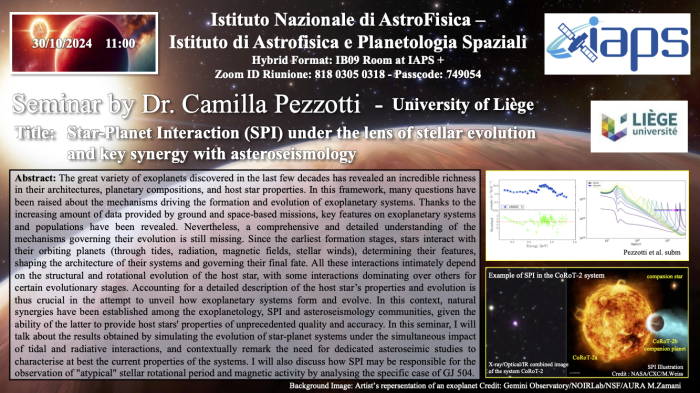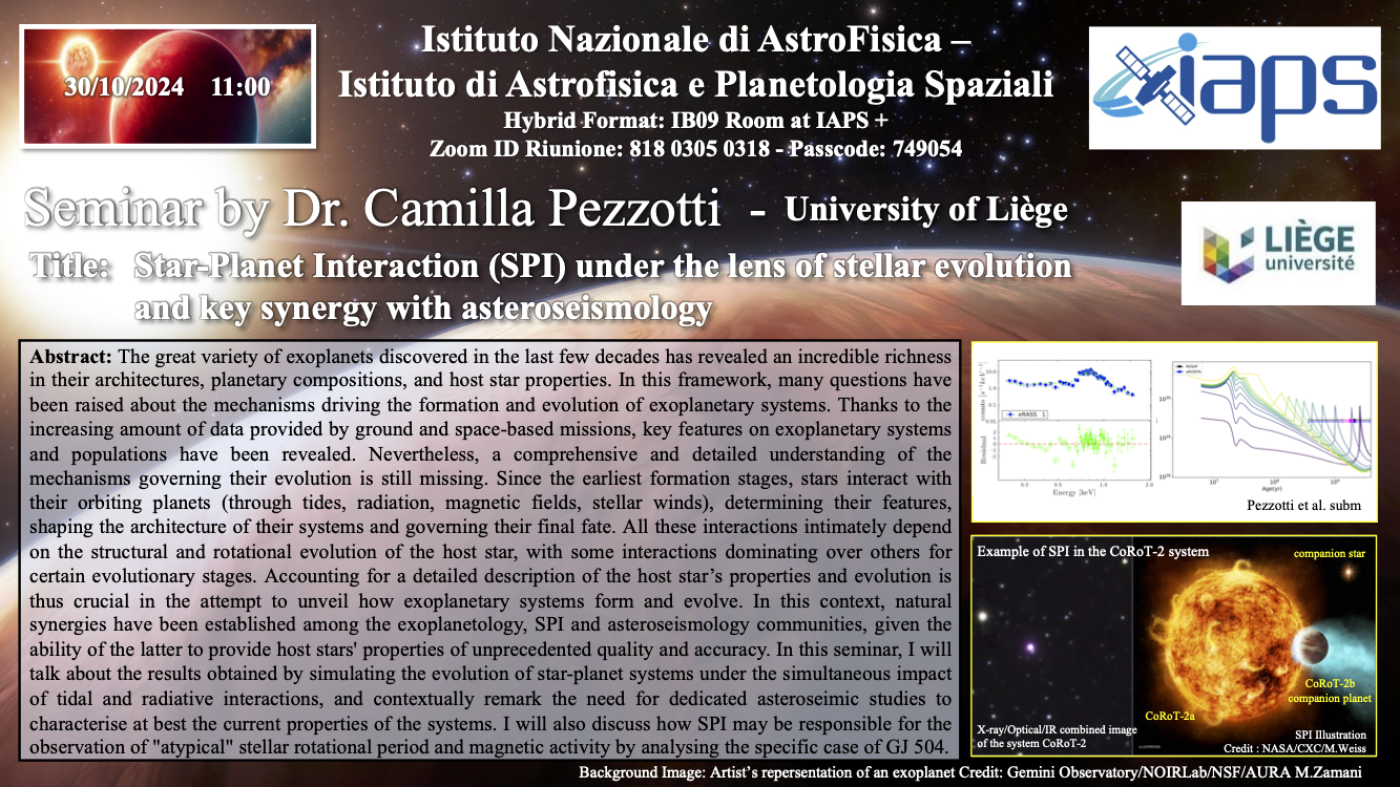Star-Planet Interaction (SPI) under the lens of stellar evolution and key synergy with asteroseismology
Affiliation: University of Liège

Abstract: The great variety of exoplanets discovered in the last few decades has revealed an incredible richness in their architectures, planetary compositions, and host star properties. In this framework, many questions have been raised about the mechanisms driving the formation and evolution of exoplanetary systems. Thanks to the increasing amount of data provided by ground and space-based missions, key features on exoplanetary systems and populations have been revealed. Nevertheless, a comprehensive and detailed understanding of the mechanisms governing their evolution is still missing. Since the earliest formation stages, stars interact with their orbiting planets (through tides, radiation, magnetic fields, stellar winds), determining their features, shaping the architecture of their systems and governing their final fate. All these interactions intimately depend on the structural and rotational evolution of the host star, with some interactions dominating over others for certain evolutionary stages. Accounting for a detailed description of the host star’s properties and evolution is thus crucial in the attempt to unveil how exoplanetary systems form and evolve.In this context, natural synergies have been established among the exoplanetology, SPI and asteroseismology communities, given the ability of the latter to provide host stars' properties of unprecedented quality and accuracy. In this seminar, I will talk about the results obtained by simulating the evolution of star-planet systems under the simultaneous impact of tidal and radiative interactions, and contextually remark the need for dedicated asteroseimic studies to characterise at best the current properties of the systems. I will also discuss how SPI may be responsible for the observation of "atypical" stellar rotational period and magnetic activity by analysing the specific case of GJ 504.


